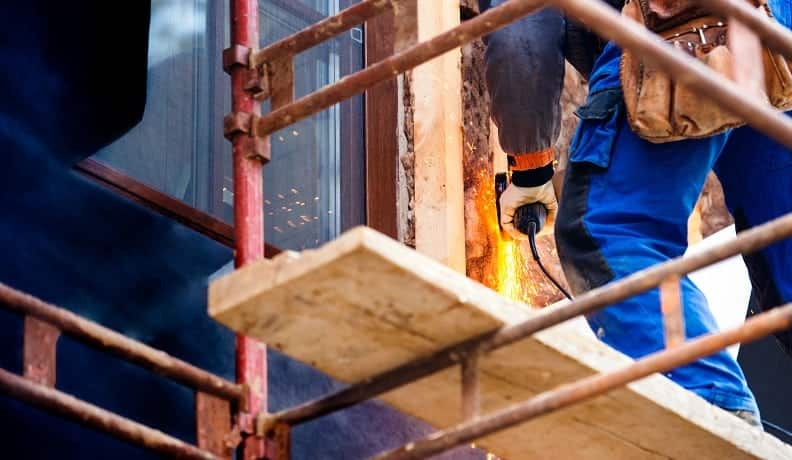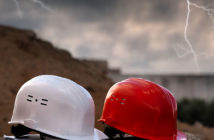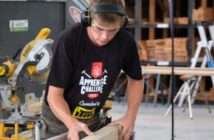Whether you are building a single-story home or a skyscraper, Medshop explores some of the most common dangers so you can remain educated and secure in your work environment

Though the construction industry has advanced significantly in protecting its workers, there are still potential health and safety hazards you must manage onsite.
These threats have severe consequences for anyone involved with the project, from accidents caused by heavy machinery to extended exposure to hazardous materials.
1. Falling from Heights
Slipping and sliding off heights presents a grave risk on construction sites. Any fall from above ground can be fatal for workers from ladders to roofs and scaffolding unless safety protocols are followed strictly.
To this end, you must take every precaution to ensure all harnesses fit correctly before climbing up the ladder or entering the scaffold, check that all equipment is functioning correctly, and only work with those trained in safe working practices at height. Your well-being should never come second to anything else while engaging in these activities – it’s always better to err on the side of caution.
2. Machinery-Related Accidents
Although construction equipment has become increasingly reliable and safe, it can still cause severe harm or injury if not handled properly. Operators of bulldozers and backhoes must exercise caution when using them to minimize the risks posed by their powerful moving parts.
Users need to be knowledgeable about the basics of operation and aware of potential safety hazards that may arise from mishandling during use. All personnel should strictly adhere to relevant safety protocols when operating heavy machinery to ensure a safe working environment.
This includes wearing personal protective equipment (PPE), following the manufacturer’s instructions, and avoiding risks with the machinery.
Additionally, all personnel working in the vicinity should stay clear of moving parts to ensure their safety. Finally, construction equipment operators must always remain alert and attentive to spring into action if something goes wrong or an unexpected hazard presents itself. Any failure to adhere to these safety regulations can result in severe injury or death.
3. Electrocution
Construction workers must be especially mindful of any electrical equipment and wiring on the job site, as it can potentially lead to horrific injury or even death should contact with exposed wires occur.
For this reason, individuals are encouraged to wear protective clothing when working with live electrical systems, and all personnel should be aware of the risks involved in handling electricity, as well as know how to use safety equipment such as an AED.
Additionally, any electrical repairs should only be carried out by qualified professionals to minimize the chance of such an incident occurring.
4. Repetitive Stress Injury (RSI)
Construction workers may be required to engage in repetitive motions regularly, which can, over time, lead to severe injury and long-term disability. Repetitive stress injury (RSI) can be caused by carrying out the same tasks continuously over extended periods, often without adequate breaks or support. Some motions that could trigger RSI include:
- hammering
- lifting
- operating machinery
Taking frequent breaks, using proper form and technique, and wearing the right safety gear are essential to avoid such injuries. For instance, using a hammer with an ergonomic handle or wearing gloves to reduce the strain on your hands.
5. Noise Pollution
Construction sites can be incredibly noisy places, and workers should take steps to protect their hearing. This means investing in ear defenders or plugs if you are exposed to loud noises for extended periods. Furthermore, all workers should be aware of the risks of excessive noise and limit their exposure if necessary.
Some of the biggest offenders concerning noise pollution include power tools, air compressors, and heavy machinery. In addition, you should only use these tools in designated areas to minimize the risk of hearing damage.
6. Dust Inhalation and Air Quality Issues
The airborne particles created by construction activities can be a severe health risk, especially when certain materials like asbestos are present. It is essential to use proper ventilation and filtration systems to protect workers and bystanders from the dangers of dust and other particles.
Respiratory protection is also worth considering when working with hazardous materials or in poor air quality. Finally, you should train all workers to safely handle materials that have the potential to create dust.
7. Hazardous Materials Exposure
Construction sites can contain hazardous materials such as lead, asbestos, and silica. As such, it is vital to keep all personnel informed of what materials they may be exposed to and the steps that need to be taken to avoid hazardous contact. This includes wearing the proper PPE and following safety procedures when handling or disposing of such materials.
It is also essential to ensure the regular testing of hazardous materials levels to identify any potential risks that could be present on the job site. By doing this, individuals can take measures to protect their health and reduce the risk of severe illness or injury.
8. Slips, Trips, and Falls
Slips, trips, and falls are some of the most common accidents in construction environments. These accidents can happen due to wet or slippery surfaces, poor lighting, uneven ground, and objects left lying around.
To minimize the risk of such an event, employers should ensure that all areas are kept clean and dry, the lighting is sufficient, and any obstructions that could cause a trip are removed.
It is also worth investing in products that can provide grip, such as non-slip mats. Furthermore, all workers should be provided with the appropriate footwear and instructed in safe working practices.
9. Fire Safety Breaches
Finally, fire safety breaches are one of the most severe risks in the construction industry. Poorly maintained electrical systems and equipment, flammable substances, and combustible materials can all increase the chances of a fire.
To reduce the risk of an incident, ensure that all electrical appliances are regularly serviced and checked for faults. It is also important to inspect any equipment that produces sparks, monitor fuel and combustible materials, provide adequate fire exits and extinguishers, and ensure all personnel is trained in the correct procedures.
Conclusion
Recognizing and following the appropriate health and safety protocols can make construction sites much safer. From noise pollution, hazardous materials exposure, slips, trips, and falls to fire safety breaches, common risks can all be managed with the proper precautions. So let’s do our part to ensure everyone goes home safe at the end of the day.









